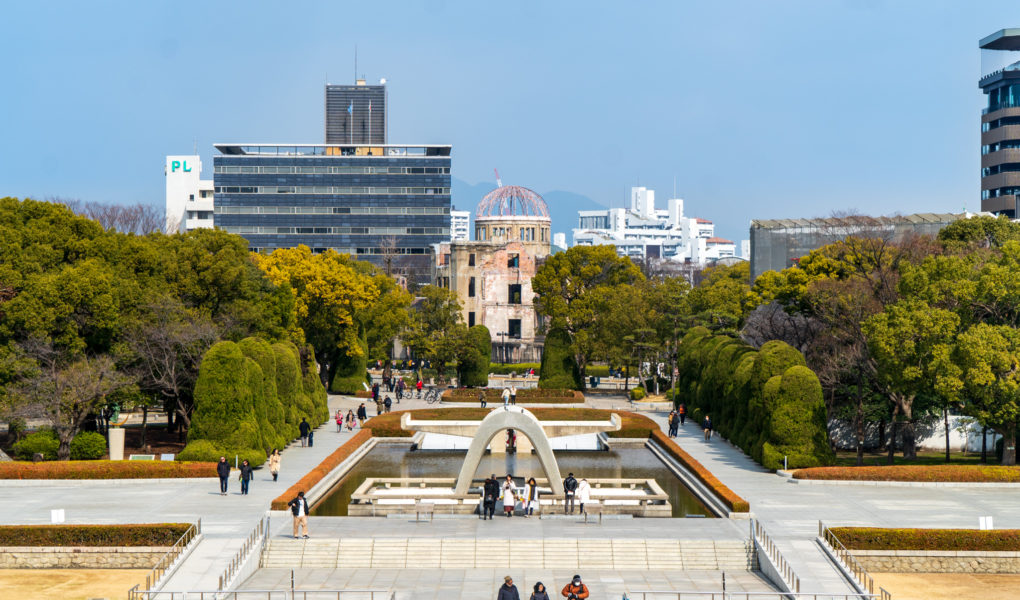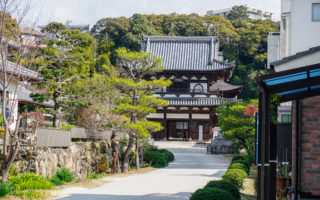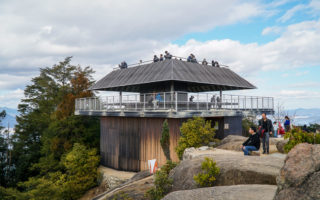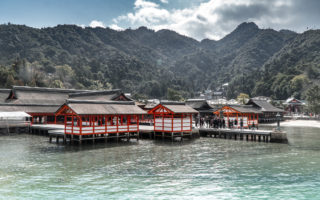Hiroshima Peace Memorial Park (Hiroshima Heiwa Kinen Kōen) located in central Hiroshima is a park dedicated to remembering the nuclear attack on the city in 1945, and those who died during or following the bombing. The park, which is one of Hiroshima’s most visited sites, contains a large number of monuments, museums and memorials. The most prominent sites of the Pace Park are the Atomic Bomb Dome, the Memorial Cenotaph, the Peace Flame and the Hiroshima Peace Memorial Museum.
Hotels Hiroshima & Miyajima Tour Japan Rail Pass
The Peace Park in Hiroshima is located in an area which used to be the city’s busy downtown district. When Japan started rebuilding Hiroshima following the nuclear attack, it was decided not to reconstruct this area as a business and residential area. Instead a memorial park was established to honor those who died and to forever remind future generations of what once happened here.
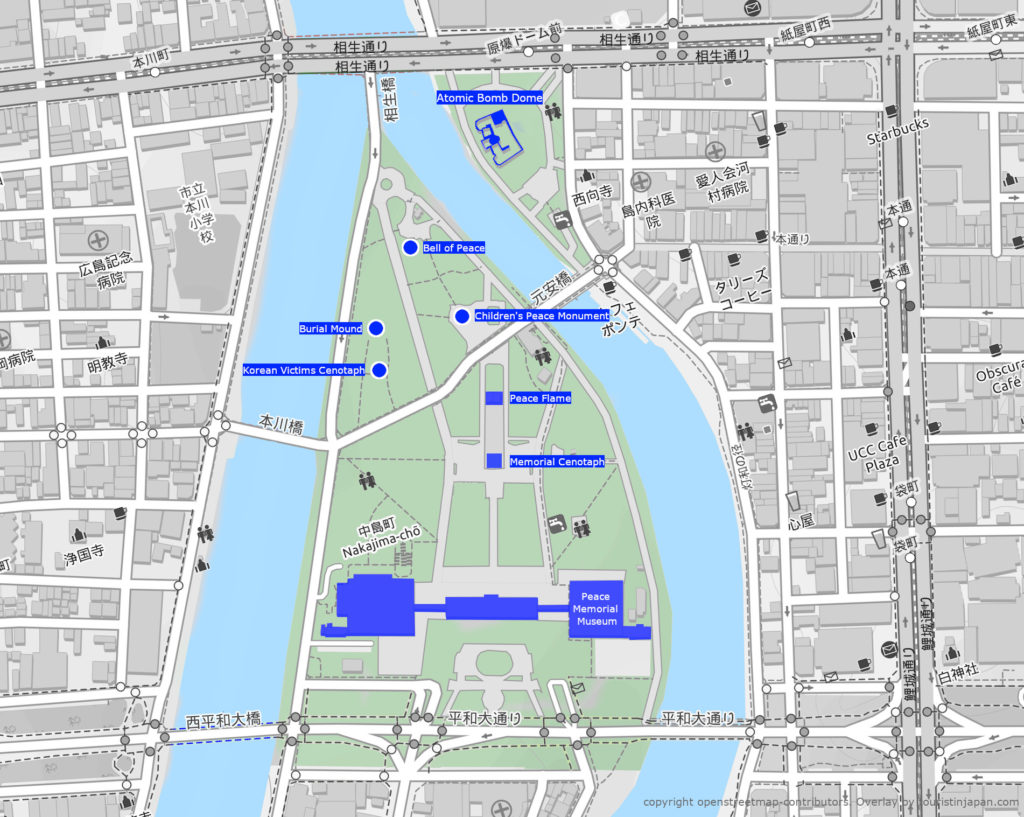
Hiroshima Peace Park map. Map copyright openstreetmap-contributors. Overlay by touristinjapan.com
Through the park runs a long, straight line from the Peace Memorial Museum in one end, over the Memorial Cenotaph, the Peace Flame and all the way to the Atomic Bomb Dome in the other end. The area on both sides of this line are covered in trees, and criss-crossed with walking paths taking visitors past the parks numerous memorials and monuments.
Prominent Momuments in Hiroshima Peace Park
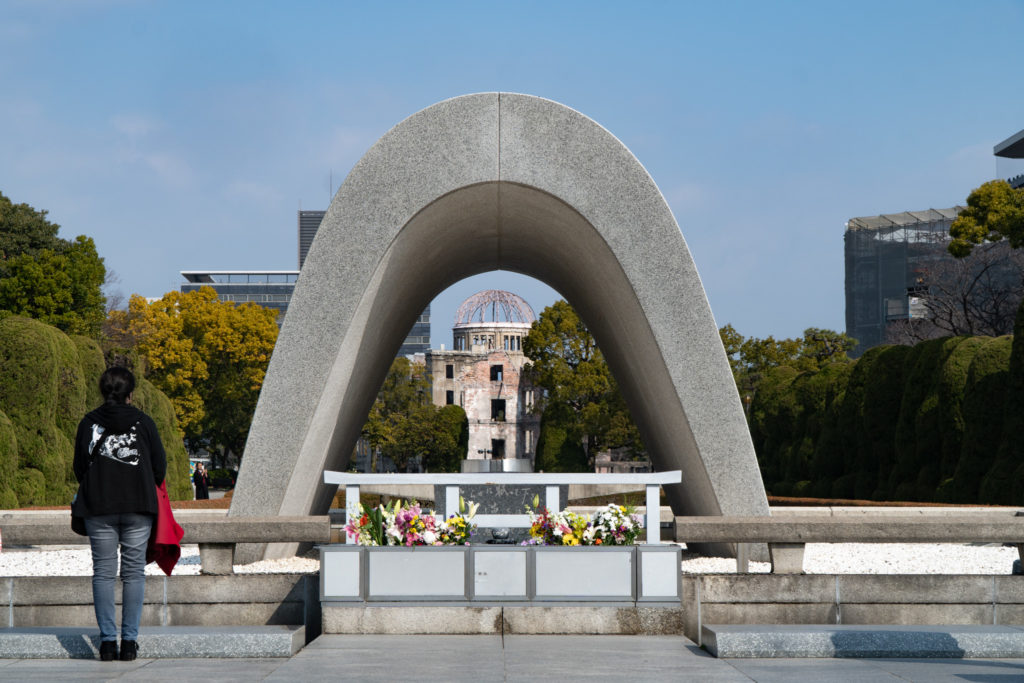
Memorial Cenotaph
A Cenotaph is a memorial, or a tomb with no bodies. The Hiroshima Memorial Cenotaph is in the shape of an arch, and contains a list of names of all the people who died directly or indirectly because of the atomic bomb dropped on Hiroshima. The list has 220’00 names on it.
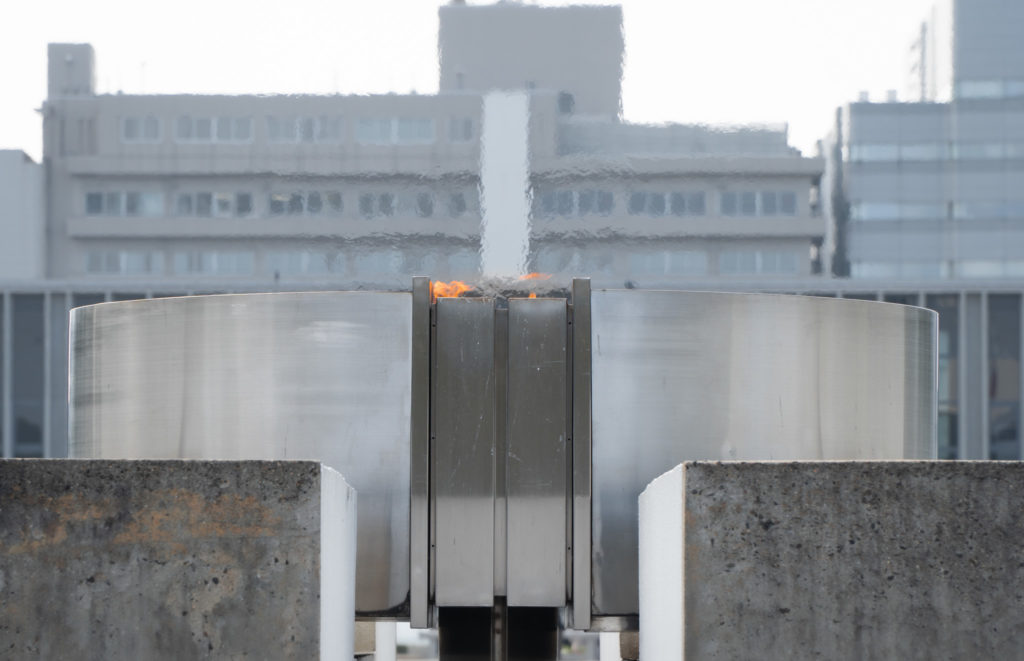
Eternal Flame of Peace
When looking through the arch of the Cenotaph one can see the Eternal Flame of Peace. It is a flame which has been burning non-stop since 1964, and will remain lit until all nuclear weapons on earth have been destroyed.
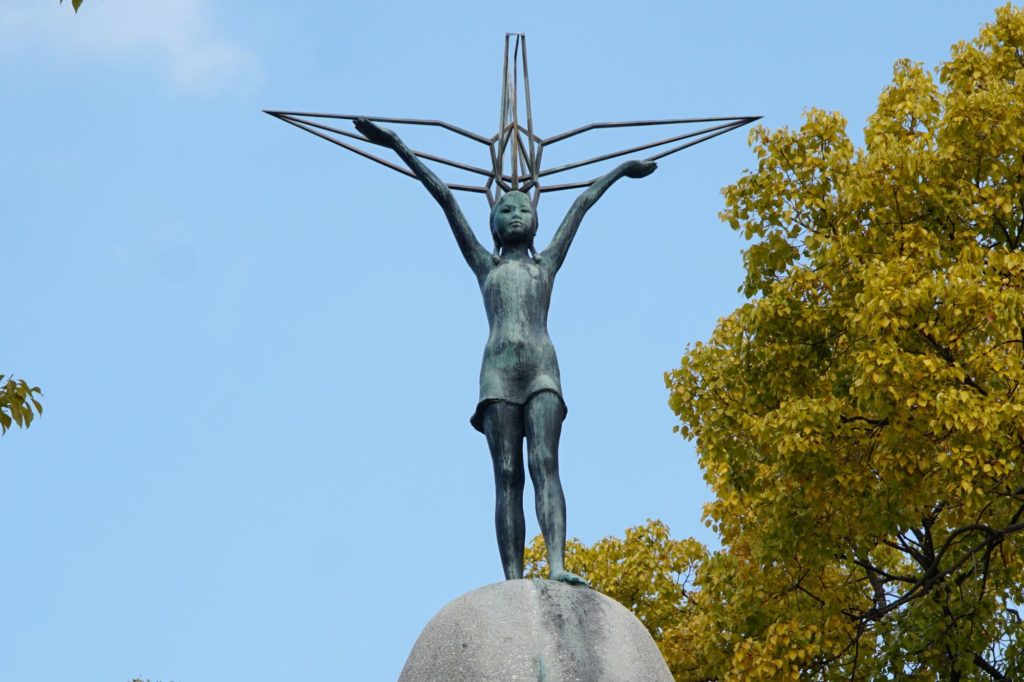
Children’s Peace Monument
A monument dedicated to the children that were killed by the atomic bomb. The monument is in the shape of a young girl with her arms stretched up in the air. Above her hangs a large paper crane. The statue is based on the story of the young girl Sadako Sasaki who initially survived the bombing, but later died from the radiation exposure. An old Japanese legends promises that whoever folds 1000 paper cranes can have a wish fulfilled by the gods, which is why she spent her last days folding more than 1000 paper cranes. To this date children from around the world fold paper cranes and send them to Hiroshima where they are placed near this monument.
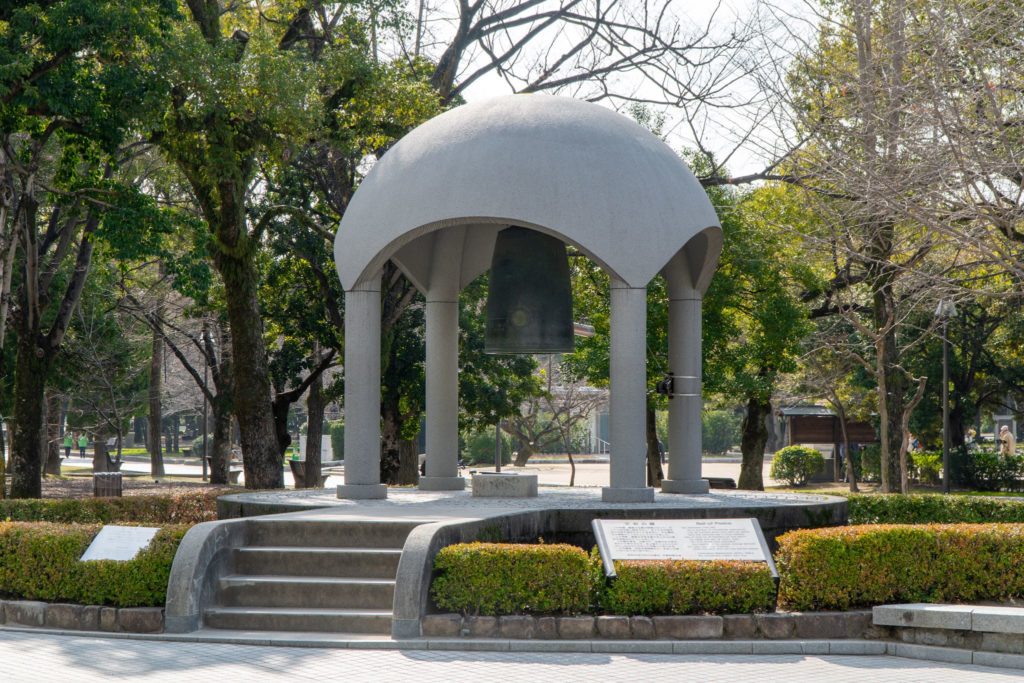
Peace Bell
The Peace Park contains 3 bells, but the most famous bell is the one located just north of the Childrens Peace Monument. Everyone is free to ring the bell for world peace. The bell was donated by the Greek embassy, but was cast in a Japanese Bell Factory. There are inscriptions in Greek, Sanskrit and Japanese.
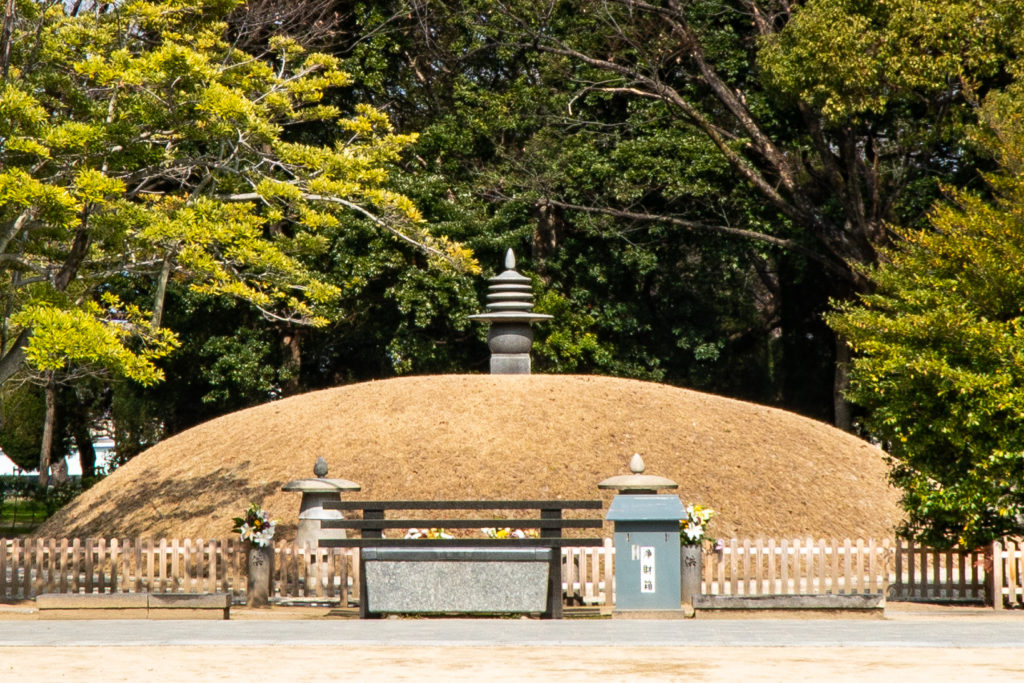
Atomic Bomb Memorial Burial Mound
The Atomic Bomb Memorial Burial Mound is a tomb (not a cenotaph) and contains the ashes of around 70’000 individuals who were killed by the bomb.
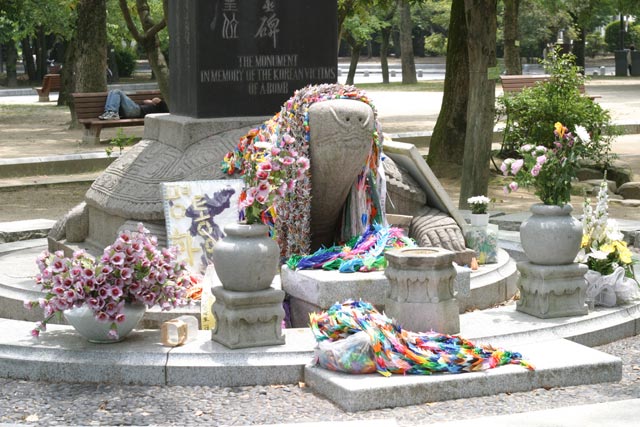
Korean Atomic Bomb Victims Cenotaph
At the time when the bomb fell on Hiroshima, a large number of Koreans were in Japan, including in Hiroshima. This Cenotaph is a monument for the tens of thousands of Koreans who died under an attack which was aimed at the country of Japan.
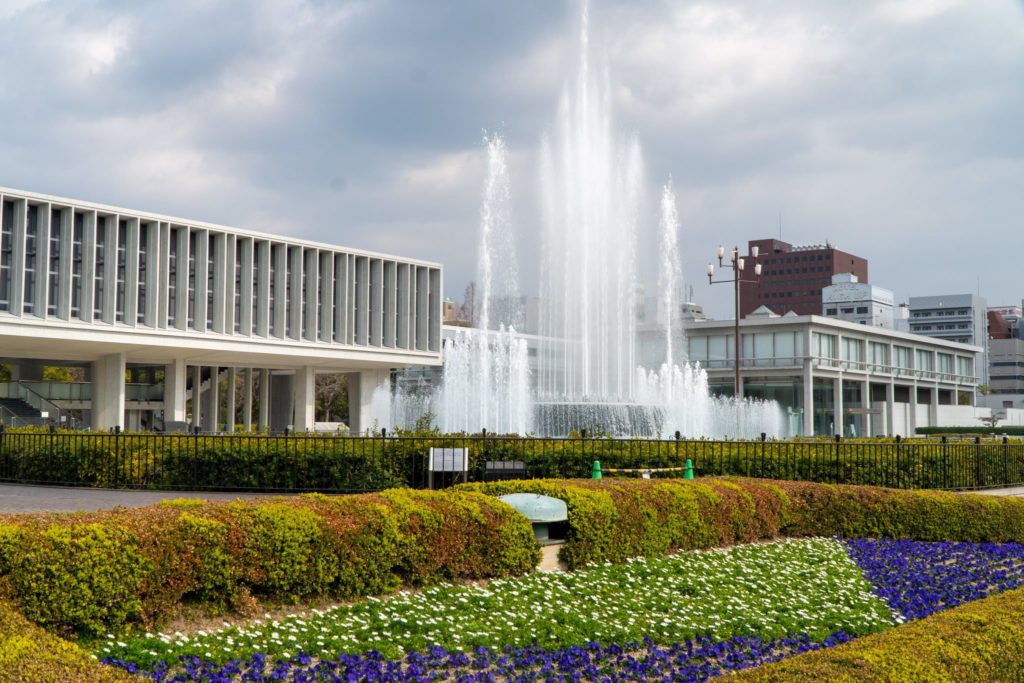
Hiroshima Peace Memorial Museum
The Peace Museum is located in a large building near the southern end of the Peace Park. The museum tells the horrific story of the bombing, and the unimaginable damage it caused to the people of Hiroshima. There are a large amount of artifacts and very explicit photos on display inside the museum. It is a harsh experience to walk trough the museum, but it is highly recommended to visit to gain a better understanding of the devastating effects of nuclear arms.
Getting there
By tram: nearest tram stop to the north end of the park is Genbaku Dome-Mae Station. Routes 2, 3, 6 and 7 stop here. The stop is right next to the Atomic Bomb Dome.

